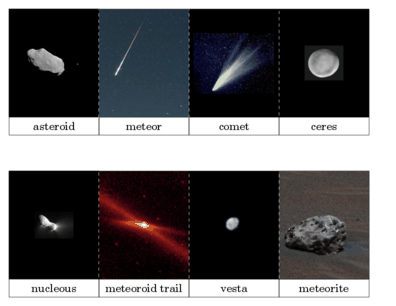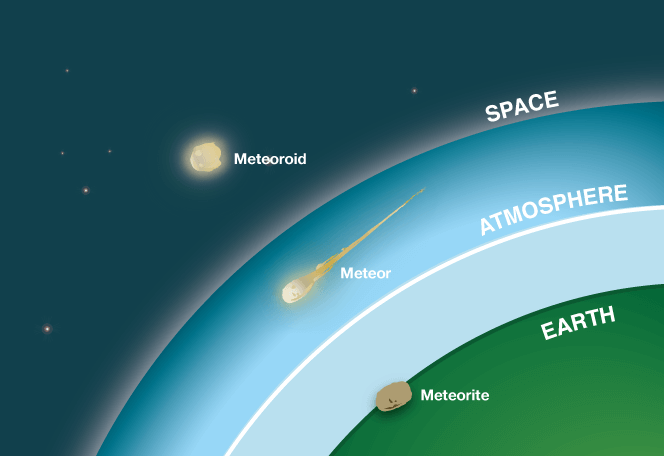

The compositions of asteroids are very similar to those of meteorites and this has led to the idea that meteorites originated in the asteroid belt. The more popular term for a meteor is shooting star. Most asteroids, however, are small objects only a few kilometres across. Pallas and Vesta (the only asteroid at all visible to the naked eye) have diameters of about 500 km and 30 more asteroids have diameters greater than 200 km. The largest asteroid is Ceres, it is 1003 km in diameter. Meteor showers such as the Perseids in August are caused. Asteroids and minor planetsĪsteroids range greatly in size with some approaching the size of small planets. the meteoroids disturbing the atmosphere so that sunlight is refracted in unusual directions. Occasionally, a larger fragment will fail to burn up completely and when it hits the ground it is called a meteorite. Certain times of the year are known for spectacular displays and these are generally associated with comets that have passed by after spewing fragments in their wake. No larger than a meter in size (3.3 feet) and sometimes the size of a grain of dust, they are too small to be considered asteroids or. Meteors and meteoritesĪ meteor is a piece of space debris that burns up as it enters the earth’s atmosphere creating a ‘shooting star’. Meteoroids are the true space rocks of the solar system.


Meteorite: A meteoroid that survives its passage through the Earth's atmosphere and lands upon the Earth's surface. They are smaller than asteroids, originated by an asteroid or comet collision. Meteoroids are space debris formed by stone or metal-like material orbiting the Sun. Meteor: The light phenomena which results when a meteoroid enters the Earth's atmosphere and vaporizes a shooting star. Meteor, meteoroid and meteorite They are all the same object and are related to what we call shooting stars, their definitions depend on their locations. There are currently 1,113,527 known asteroids and 3,743 known comets. They are a lot like a fossil record of our early solar system. These chunks of rock, ice, and metal are leftovers from the formation of our solar system 4.6 billion years ago. As these substances stream off the comet they form a spectacular gas and dust cloud of enormous length that can often be seen from earth with the naked eye. Meteoroid: A small particle from a comet or asteroid orbiting the Sun. Our solar system’s small bodies asteroids, comets, and meteors pack big surprises. Generally speaking, a comet is a frozen ball (of water, carbon dioxide, ammonia and other organic carbon compound ices) hurtling through space.


 0 kommentar(er)
0 kommentar(er)
